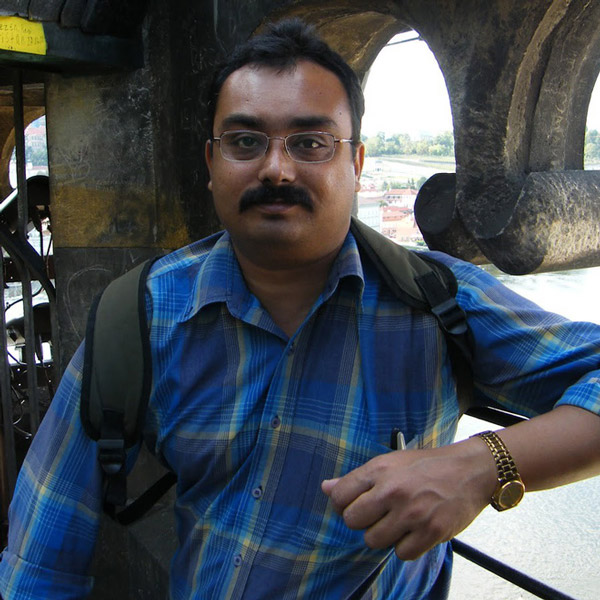The superconducting scientific report is controversial, if it is wrong it will be a famous scam, if it is true it will change the world
Superconductivity is a material that has no resistance, which means that the electron does not encounter obstacles when it passes through the superconductor.
Currently, only by bringing materials to extremely low temperatures can physicists get superconducting states. If superconductivity is achieved at room temperature, total energy can be transmitted without being hindered by physical factors. At that time, the computer will be faster, the sensor more accurate and we will get more energy to use.

Superconducting material.
Last July, two renowned chemical physicists from the Indian Institute of Science in Bangalore, Dev Thapa and Anshu Pandey, reported that they had used a matrix of gold and silver particles to create "superconductivity in room temperature conditions with pressure". This statement stunned the entire scientific world not only at the highest room temperature but also because gold and silver have yet to achieve superconductivity in cold temperatures.
After studying the scientific report in depth, physicists found something wrong.
Brian Skinner, a physicist at Massachusetts Institute of Technology, discovered the irrational point of research. There is a strange link in the results between two different tests. Specifically, the similarity of sound created in two experiments separates the sensitivity of superconducting material. This is impossible because the sound created during the experiment is random and there will be no two random elements that are the same.
According to Brian Skinner, it would be unusual to have the same results when performing two different experiments with two different timelines under different test conditions.

Green and blue dots, sound performances measured in Thapa and Pandey's two separate experiments only move up and down.
Prior to Skinner's discovery, the two Indian scientists said they did not recognize the similarities between the two sounds and confirmed that they had seen superconductivity at room temperature.
Pratap Raychaudhuri, a physicist at Tata Basic Research Institute in Mumbai, said the study may be true. And it is possible that the sound obtained is part of the signal that appears when the particles react in the magnetic field rather than sound. And if that's the case, creating two equivalent signals in a magnetic field of less than 3 Tesla is possible.
But Raychaudhuri's explanation still cannot explain the whole other problems encountered by the study.

Pratap Raychaudhuri.
In the report, the nanostructures of both gold and silver that are both electric and magnetic can switch to superconducting state at the same temperature. Raychaudhuri said this only happened when using the same sample of gold and silver on both experiments. But two Indian scientists insisted they did not do that.
There is a simple way to answer this question: Thappa and Pandey sent samples of them to be successful for the scientific community but the two scientists refused.

Samples of superconducting power cables are kept cold in liquid nitro.
There are many confusing things around the research of Dev Thapa and Anshu Pandey. If this study exactly changes humanity, but until these two scientists give evidence, it is still impossible to determine whether they actually did it or not.
The research event of Dev Thapa and Anshu Pandey led many people to remember a famous scam that took place in the scientific world.
In 2001, famous German physicist Jan Hendrik Schön announced the successful creation of a transistor - transistor at the molecular level. Schön's research is revolutionary, because if successful in organic electronics, molecular-level activity would completely replace electronics using silicon. At that time, electronics will be cheap and unprecedented and the limit of Moore's Law will open forever.
When the researchers carefully analyzed Schön's data, they also discovered that many tests had the same sound intensity measurements. This is impossible because the sound emitted by different experiments is random and they must be different. And when investigating further, the researchers found that Schön's "world-changing" studies were not right. Schön falsified the research results and deceived the scientific community. Later, all of Schön's qualifications were taken away, many of his studies were also removed from popular journals.
If Thapa and Pandey's case is similar to Schön's, their punishment is something everyone can see. Is this a fraud study or just a measurement error in a study that can change the world. We will have to wait to know the results. Thapa and Pandeu are currently not announcing what they have done.
See more:
- For the first time in history, scientists successfully connected the human brain to the Internet
- Scientific perspective: Can people travel time?
- After 16 years, scientists have successfully built ultra-thin solar cell systems, which can be applied to any surface
You should read it
- Hygrometer type good, cheap should buy the most today?
- What is a pressure cooker? Structure, uses and usage of pressure cooker safety you need to know
- What is a pressure cooker? Which model pressure cooker should you buy best?
- Identify popular online scams so as not to lose money unfairly
- Where to buy a blood pressure monitor?
- Beware of new email scams
- 10 common scams on Facebook
- How hot is the planet of Mercury?
May be interested
- Science warns: 70-90% of corals will disappear in the next 20 years, and become extinct in 80 years
 according to a new scientific report, climate change will destroy most of the coral reefs on earth by 2100.
according to a new scientific report, climate change will destroy most of the coral reefs on earth by 2100. - 14 things seem unbelievable, but it is still true
 it seems that life has so many things being misunderstood, although you don't want to believe, the truth is always true, hard to deny.
it seems that life has so many things being misunderstood, although you don't want to believe, the truth is always true, hard to deny. - How to change your birthday on Facebook
 how to change your birthday on facebook. facebook is the most famous social network in the world today, but some of the information changes on facebook are still difficult to find. one of them we can mention is the change of date of birth on facebook, the developer has left this change in a fairly tight spot.
how to change your birthday on facebook. facebook is the most famous social network in the world today, but some of the information changes on facebook are still difficult to find. one of them we can mention is the change of date of birth on facebook, the developer has left this change in a fairly tight spot. - 11 most famous hackers in the world - who are they?
 the 11 most famous hackers in the world what did they do? how can they be so famous and known to everyone? read the article for more details
the 11 most famous hackers in the world what did they do? how can they be so famous and known to everyone? read the article for more details - A recording word is enough to divide the Internet world in half, Yanny or Laurel, which side do you follow
 a recording taken from the vocabulary.com page has made the internet world controversial because of the words pronounced yanny or laurel.
a recording taken from the vocabulary.com page has made the internet world controversial because of the words pronounced yanny or laurel. - Famous shoe brands all over the world
 the shoe manufacturing industry is experiencing a booming and flourishing period. people are becoming more and more aware of fashion and prefer different shoes that match costumes or special occasions to show their style.
the shoe manufacturing industry is experiencing a booming and flourishing period. people are becoming more and more aware of fashion and prefer different shoes that match costumes or special occasions to show their style. - New Gmail scam from... Google?
 not every account security email you receive is legitimate. and if you see an email from google in your gmail inbox, think twice. there's a new gmail scam going around — and it looks like it's coming straight from google.
not every account security email you receive is legitimate. and if you see an email from google in your gmail inbox, think twice. there's a new gmail scam going around — and it looks like it's coming straight from google. - 90% of the world population does not know the mysteries in these famous works
 here is the secret of the 10 most interesting buildings in the world, you will surely be amazed at them.
here is the secret of the 10 most interesting buildings in the world, you will surely be amazed at them. - Photos of the 'Old Earth and Now': How has the Earth changed over the last 100 years?
 below is a picture of the incredible change of the earth over the past 100 years recorded by nasa's aerospace and aerospace agency.
below is a picture of the incredible change of the earth over the past 100 years recorded by nasa's aerospace and aerospace agency. - The most famous fashion brand in the world
 the fashion industry is one of the oldest industries. the world has witnessed the emergence of new trends and fabrics in the fashion industry.
the fashion industry is one of the oldest industries. the world has witnessed the emergence of new trends and fabrics in the fashion industry.










 History of birth and development of the Olympic Games
History of birth and development of the Olympic Games All about Elon Musk's life, career path and success
All about Elon Musk's life, career path and success Linux - Journey from a fun to software that dominates the world
Linux - Journey from a fun to software that dominates the world Did you know: The world's first military submarine is just a big wooden crate?
Did you know: The world's first military submarine is just a big wooden crate? Where does the oxygen on Earth come from?
Where does the oxygen on Earth come from?